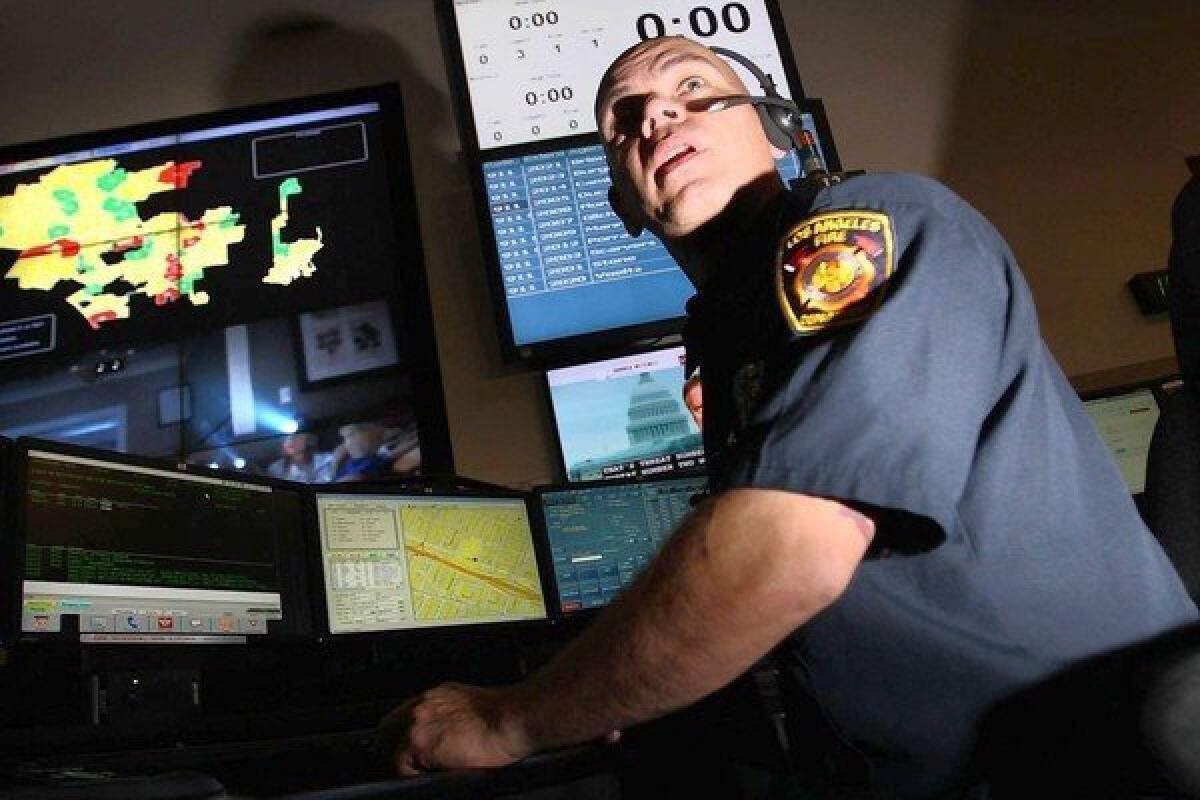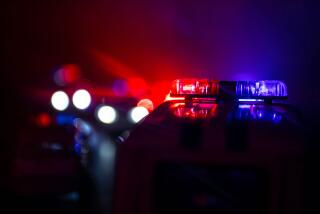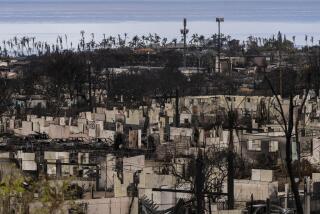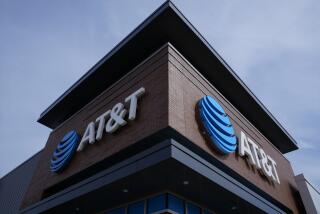Many 911 cellphone calls lack location information, study finds

Cellular phone networks across California are failing to properly deliver the location of 911 callers to emergency rescuers in a growing majority of calls for help, according to a report released by advocates for the state’s emergency dispatchers.
Although the cause is unclear, the report notes that the networks of AT&T and T-Mobile have seen severe declines in location deliveries while other cellular carriers’ have been on the rise.
The study analyzed more than 3 million wireless 911 calls made from 2008 through 2012 handled by emergency call-takers in Bakersfield, Pasadena, San Francisco, San Jose and Ventura County.
It found that in all five areas, fewer than half reached dispatchers with an estimate of the caller’s location in December 2012, ranging from 49% passing along location data in Bakersfield down to just 20% in San Francisco.
“The public has an expectation when they call 911 that we know where they are. That just isn’t the case with wireless anymore,” said Danita Crombach, president of CalNENA, the California chapter of a national group that provides training and develops standards for 911 call-takers.
With its new report, Crombach’s group joins a chorus of public safety groups pressuring the government to pursue tougher regulation of the 911 service provided by the corporations that manage wireless phone calls.
The study did not include Los Angeles County’s highest-volume dispatch centers, which are operated separately by the police and fire departments for the county and the city of Los Angeles.
Under a system created by the federal government in 2001, major cellular phone carriers are expected to forward the estimated location of outdoor 911 callers to emergency dispatchers when they dial from a mobile phone. If that fails, call-takers receive only the coordinates of the network tower that routed the call and must question the caller to elicit their precise location, which can eat up valuable seconds in life-threatening emergencies.
In contrast, when a caller dials 911 from a land-line phone, the exact address is typically forwarded directly to emergency dispatchers.
However, the share of calls for help coming from land-line phones fell sharply over the last decade as cellphone use skyrocketed. Wireless calls now account for approximately 70% of all 911 calls nationwide, a total near 400,000 each day, according to industry and government figures.
Also on the rise are the number of wireless 911 calls made indoors, where no official standards exist for how to determine a caller’s location. The Federal Communications Commission has convened industry leaders to help test new rules. A March report concluded that developing a solution could take years to roll out to the public.
In its new report, CalNENA suggested that a rise in indoor calls could be partially to blame for the dropoff in wireless location data. But its statistics show gradual improvement from phones connected to networks powered by Verizon and Sprint, yet severe declines from the AT&T and T-Mobile networks, suggesting other causes specific to individual carriers may be at play.
In the period studied, AT&T’s rate fell the furthest, dropping from 92% of calls forwarding location data in early 2008 to just 31% at the end of 2012, the report said. T-Mobile’s rate started at 47% and fell to 19%.
A spokesperson for T-Mobile said the company would carefully review CalNENA’s report. AT&T officials did not respond to an interview request. Officials at CTIA, the lobby group that represents wireless phone companies in Washington, declined to comment.
“I don’t know what happened, I just know that this is a significant difference,” Crombach said. “Instead of that percentage increasing, that percentage is decreasing.”
The data analysis was conducted for CalNENA by Public Safety Network, a contractor that has worked on call tracking for local agencies and the state.
ALSO:
Two men held on arson charges in Chatsworth fire
Woman’s body found in search for missing investigator
Judge orders cooling-off period to prevent another BART strike
Twitter: @palewire
More to Read
Sign up for Essential California
The most important California stories and recommendations in your inbox every morning.
You may occasionally receive promotional content from the Los Angeles Times.











